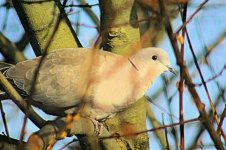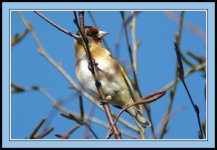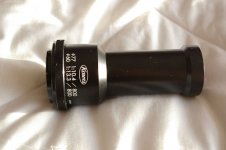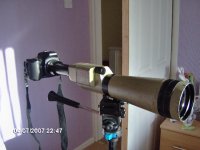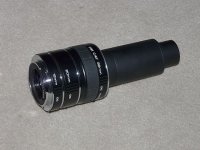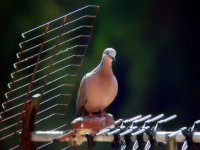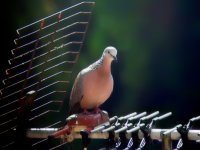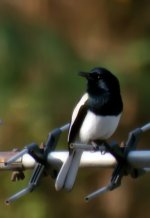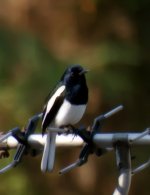Hi All,
Paul Corfield and Sout Fork,
When I have 2xtc, DSLR and attachments on I find it very difficult to control the vibration which I think causes the majority of my pictures to be on the soft side. I also have a backend weight problem which gives me a hell of a time to get the scope locked onto the subject. The scope almost always tilt backwards slightly after tightening the arm which throws the subject off centering. I am using a manfrotto 808RC4 head, am I using the wrong head? Do you have any reccommendations on how I can lower or eliminate the vibration and scope drift?
With my 2x tc attached I lose a lot of light and of course vibration is also increased 2x as well, I am thinking of replacing it with something more efficent. Do the extenders do the same thing like the tc except with less glass between? Does it increase image size or focusing distance or both.




